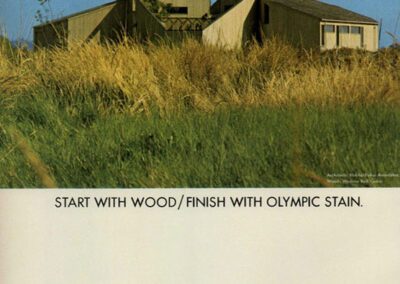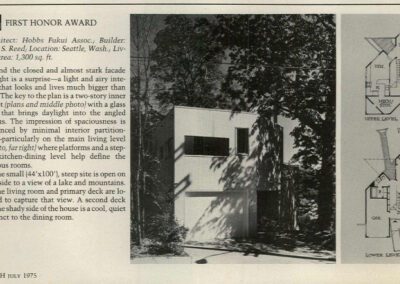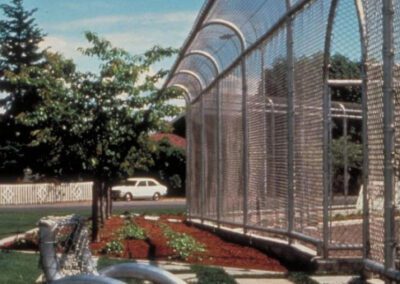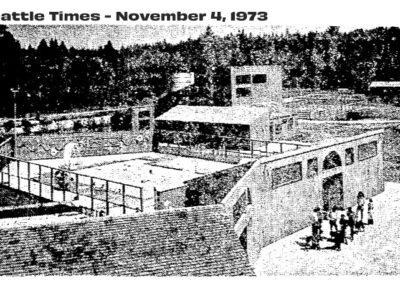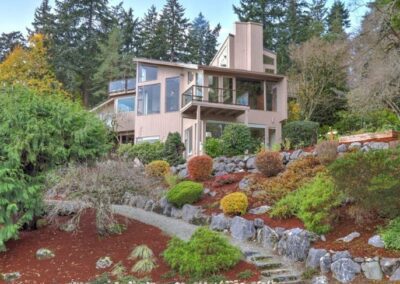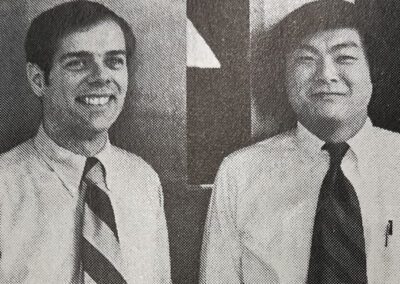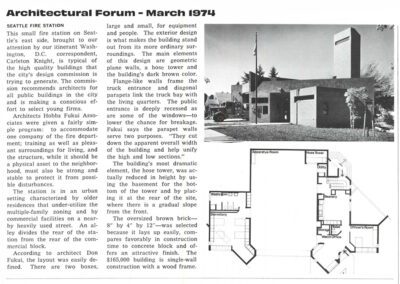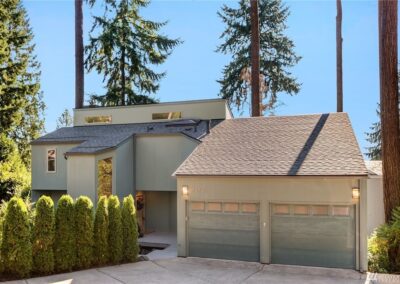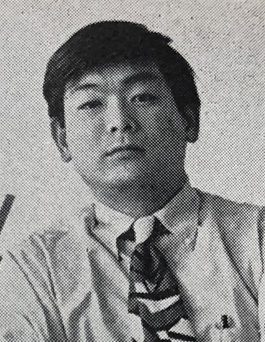
Fukui, David H.
(1939 – 2019)
Architect David Hiroshi Fukui was born in Seattle on November 13, 1939. His father, William Owari Fukui was of Japanese descent and his mother, Mitsuko, was American born. Together they ran a laundry in Seattle. The family was initially detained as part of Executive Order 9066 (February 19, 1942) which required the forced the removal of all Japanese Americans from the west coast due to the perception that they were security risks after the bombing of Pearl Harbor. After being required to report to a Puyallup Assembly Center, instead of being sent to a relocation camp, the family was eventually allowed to move to Detroit, Michigan and remained there for the duration of the war. At the time David was just a toddler.
After the war, the family returned to Seattle. David attended Garfield High School and graduated with honors in 1958. He was heavily involved in student government serving as class Vice President his Sophomore year, President during his Junior year, and Inter-High School Council Representative his Senior year. David was also an Eagle Scout, and was awarded the high honor in 1956. He was part of an active all-Japanese descent scouting troupe that was organized by the Japanese Baptist Church. That year nine members of the troupe received their Eagle Scout badges.
Upon graduation Fukui enrolled at the University of Washington and graduated with a Bachelor’s degree in Architecture in 1964. Upon graduation, he took a job with architect Ralph Anderson and then worked for architect Albert O. Bumgardner before joining Richard H. Hobbs in 1968. Within a year, Hobbs asked Fukui to join him in a partnership. Together the two University of Washington graduates formed a powerful team which pushed architectural designs in the Pacific Northwest. Together, they garnered eight Seattle AIA design awards within a 15-year period; six within a three-year time span.
By the early 1980s, the Hobbs/Fukui firm was among a hot group of local architectural firms dubbed the “Gang of Five” by the Seattle Weekly (others included Olson-Walker, Hewitt-Daly, Calvin-Gorasht, and Schorr-Miller). The Weekly noted that the groups were reimagined “a downtown Seattle worth living in” with their “what-if” concepts and designs that ran as a series in the newspaper. More importantly they influenced the city’s design and spurred cultural conversations.
Hobbs/Fukui Associates were firm believers in the “Design Process,” researching every aspect of a project and how it would affect the entire environment around a site before the actual designing of the project began. This included study of topography, traffic patterns, and zoning; and for public projects, they heavily involved the community.
The firm is perhaps best remembered for their unique homes, which often incorporated 45 degree angles in plan and elevation. Notable projects include the Dr. Gene O. Graham House in Bellevue (1969, AIA Merit Award, Seattle Times / AIA Home-of-the-Month June 1969 & Home of the Year); the Fred O. Paulsells Jr. House at the Useless Bay Colony on Whidbey Island (1970, Seattle Times / AIA Home-of-the-Month June 1970); the Dr. Harold B. Leland House, (1971, Seattle Times / AIA Home-of-the-Month Nov 1971); the John H. Strasburger House on Mercer Island (1970, Seattle Times / AIA Home-of-the-Month April 1971); the David P. Haworth House on Mercer Island (1972, Seattle Times / AIA Home-of-the-Month March 1972); the Ken & Carolyn Martin House in Lake Sammamish (1972, Seattle Times / AIA Home-of-the-Month April 1972); David Fukui’s own house (1973, Seattle Times / AIA Home-of-the-Month Dec 1973 & Home of the Year, also featured in House + Home July 1975); and Richard Hobbs house (1975) which was one of 20 awards of excellence noted by Architectural Record Magazine after receiving a “Builders of our Community” Environmental Award (1975) and Seattle AIA Merit Award.
Notable commercial projects include Seattle Fire Station No. 34 (1971, featured in Architectural Forum -1974); the Red Barn Ranch (1973) which was part of Seattle’s Model Cities Program; King County Administration Pedestrian Tunnels Graphics Package (1972); a 20-story tower and two lower towers at the north end of Pike Place Market (1977); addition to the Clarence H. “Hec” Edmundson Pavilion at UW (1979, with Decker/Barns); and the Viewland/Hoffman Electrical Receiving Substation (1979 with artists Andrew Keating, Sherry Markovitz and Buster Simpson), which won a WA State Aggregates & Concrete Association Merit Award.
In 1982 the firm added William H. Davison as principal and the name was changed to Hobbs Fukui Davison. Additional change came when the three partners became associated with another firm, Decker Associates. This limited joint-venture relationship focused on health-facility design and planning. Jon H. Decker served as managing partner under the firm name of Decker/Hobbs Fukui Davidson. During this era, notable designs included the award-winning Pier 48 Information and Observation Center (1982, Seattle AIA Honor award); the King County Fire District No. 4 station expansion in shoreline (1983); an expansion of Port Angeles Hospital (1983); and the Robert McConkey Jr. House on Lake Tapps (1986, Seattle Times / AIA Home-of-the-Month May 1986 & Home of the Year).
For reasons unknown, in 1986, the firm was split into separate groups. The Hobbs Architecture Group mainly focused on working with large scale developments and financial institutions. Fukui specialized in health-care and laboratory facilities with the help of Davison. Eventually Fukui opened his own firm in 1991 (Fukui Architecture) and he continued there until his retirement in the early 2000s. Later projects under his sole practice included a residence in the community of Hansville which garnered him an AIA award in 1996.
Fukui was a strong advocate in creating diversity within the profession and helped spawn the formation of the Seattle AIA Diversity Round Table. In honor of his parents, he also created the Mitsu and William Fukui Memorial Endowed Diversity Scholarship at UW to support minority graduate students in 2005.
Fukui was an active member of Central Area Architects Advisory Group and served as a design consultant for Architecture-West magazine. He also had a stint as Chairman of Seattle Design Commission (1986), and during the 1970s he taught architecture studio classes a UW.
After a long battle with Parkinson’s disease, Fukui passed away in Seattle on March 31, 2019 at the age of 79. He was laid to rest at the Fukui family plot at the Sunset Hills Memorial Park in Bellevue. His drawings and papers are archived at the University of Washington Special Collections.
– Michael C Houser
Fred O. Paulsell Jr. House | Useless Bay -Whidbey Island
Built 1970 | Source: Progressive Architecture – June 1971
